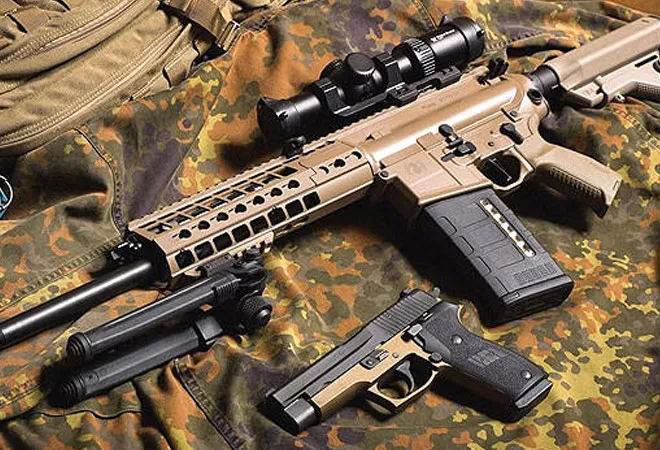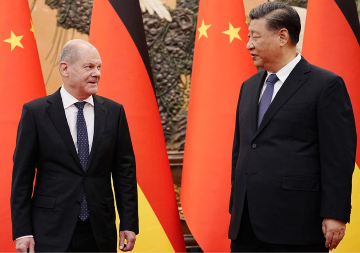
This short paper explains the United States’ (US) preference ordering with regard to arms acquisition by India. It is an important topic because approximately 70 percent of Indian weapons systems are imported from Russia, which can become a thorn in the Indo-US defence collaboration. The rank ordering of the U.S. and Indian preferences regarding arms vendors falls under two different Indian foreign and defence policy paths: Strategic autonomy and partnership with the US. The model demonstrates that in both scenarios the US would prefer Indian vendors to develop indigenous weapons production capability over buying weapons from Russia. The argument underscores the preference to lessen the continued dependence on Russian-made military capability. Expanding domestic production capacity emerges even if the US becomes a strategic partner. Thus, indigenous weapons development in India may be the consensus outcome of US and India regardless of Indian strategy.
The preference ordering makes five simple assumptions, two theoretical and three empirical. First, that all preferences are complete, i.e., an actor can rank the different preferences as greater than >, less than <, equal to <=>. Variations of these may include combinations like greater than and equal to <≥>, less than and equal to <≤>. Second, all preferences are transitive, i.e., if an actor prefers A over B and B over C, then the actor prefers A over C.
The rank ordering of the U.S. and Indian preferences regarding arms vendors falls under two different Indian foreign and defence policy paths: Strategic autonomy and partnership with the US.
The first empirical assumption is: One of the largest suppliers of weapons in the world, China, is excluded from the available choices of US and India. This assumption is defensible because China is currently the primary geostrategic competitor of the US, and China has fought a war and is embroiled in several militarised inter-state disputes with India. Second, India’s overall foreign and national-security strategy remains open to flexible partnerships with different states or a closer partnership with the Quadrilateral Security Dialogue (Australia, India, Japan, and US). Third, the US and India are their own preferred vendors of weapons under all scenarios. This assumption is consistent with US’ national security policy and the fact that US remains the world’s largest arms exporter. It is also consistent with India’s recent national security policy to develop its own military-industrial complex, for which it is has even cancelled orders from foreign vendors, ramped up production and induction of indigenous weapons systems, and opened up defence manufacturing to the domestic private sector.
Given the above assumptions and the two possible Indian strategies, the four sets of preferences of US and India can be presented below.
- American preferences for vendors for Indian weapons, if India pursues partnership with the US:
U.S. ≥ NATO states = India ≥ Russia
- American preferences for vendors for Indian weapons, if India pursues strategic autonomy:
US ≥ NATO states = India ≥ Russia
- Indian preferences for vendors for Indian weapons, if India pursues partnership with the US:
India ≥ US = NATO states ≥ Russia
- Indian preferences for vendors for Indian weapons, if India pursues strategic autonomy
India ≥ U.S. = NATO states = Russia
India is indifferent to the US and NATO members if it pursues alignment with the US and the Quad, while India remains indifferent to the US, NATO members, and Russia if it purses strategic autonomy.
The above presentations show that the US remains its own preferred vendor regardless of what strategy India pursues, while India remains its own preferred vendor regardless of its strategy. So the US remains indifferent to India and NATO member countries regardless of India’s strategy. However, India is indifferent to the US and NATO members if it pursues alignment with the US and the Quad, while India remains indifferent to the US, NATO members, and Russia if it purses strategic autonomy. Finally, the US’ least preferred vendor regardless of Indian strategy is Russia, while India’s least preferred vendor is Russia if India pursues alignment with the U.S. and it’s indifferent with regard to its least preferred vendor being U.S., NATO members, and Russia if it pursues autonomy.
To summarise, the above preference ordering shows that India is never the least preferred vendor for the US, while Russia is always the least preferred one. On the other hand, India is always its own most preferred vendor. Thus, in both scenarios of Indian strategy, India as a vendor is more preferable both to the US and India over Russia.
The views expressed above belong to the author(s). ORF research and analyses now available on Telegram! Click here to access our curated content — blogs, longforms and interviews.




 PREV
PREV



